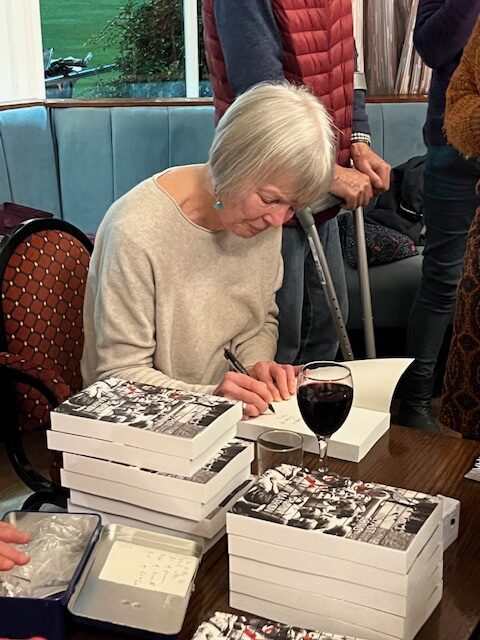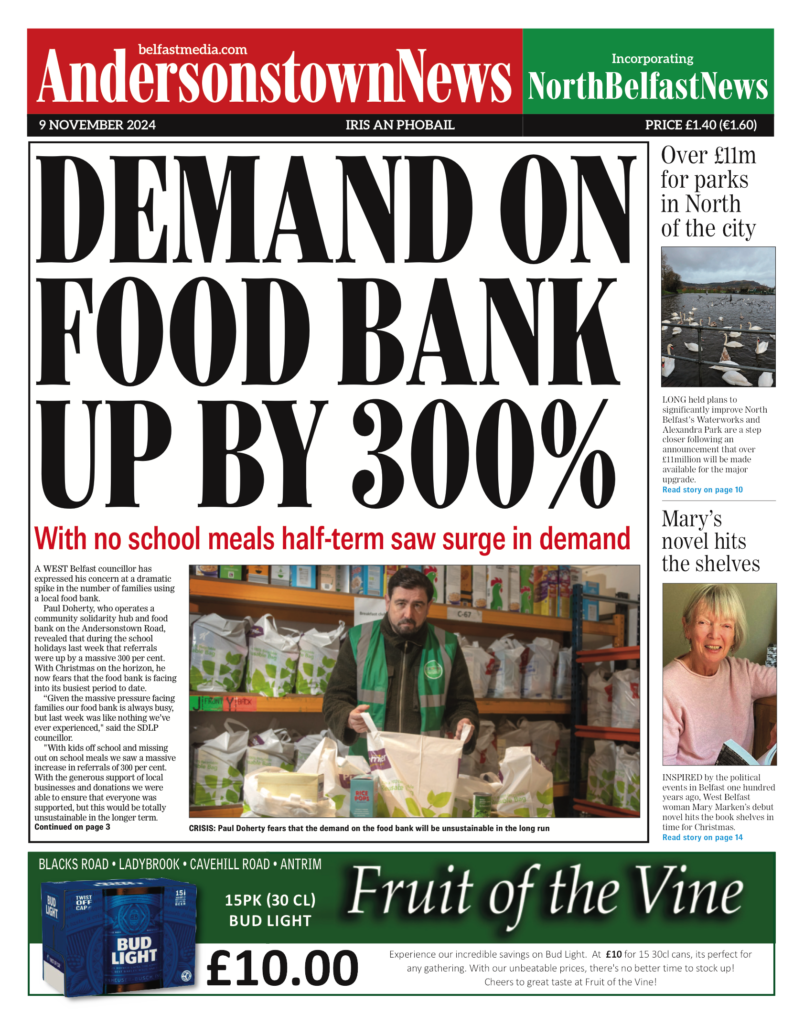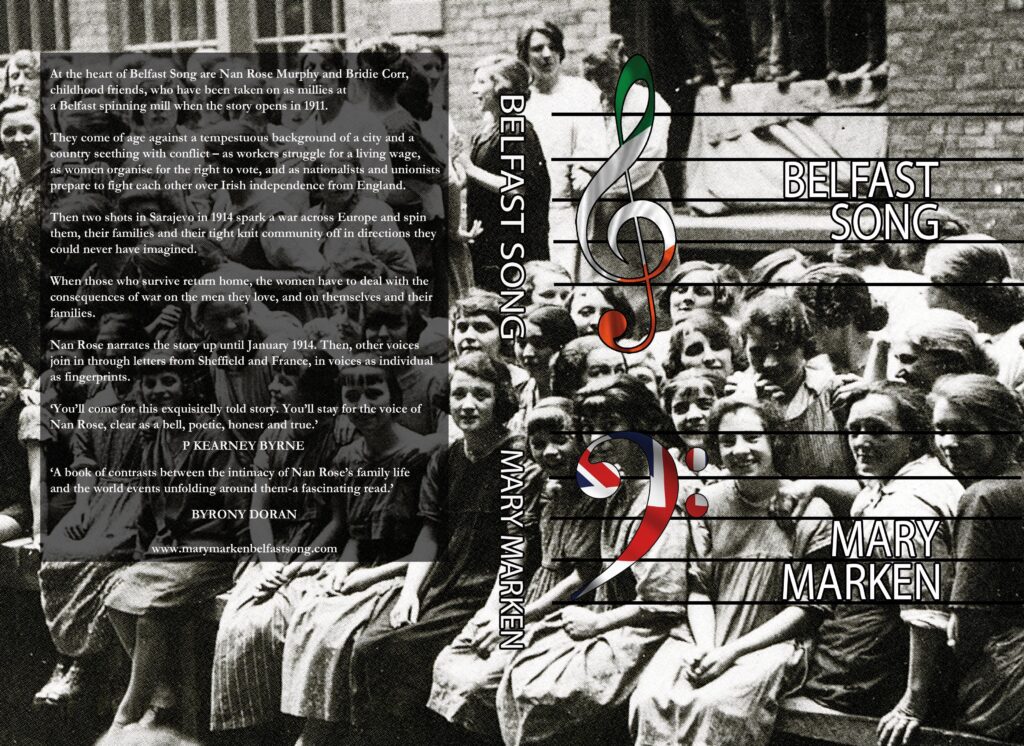Hopefully on a more even keel from here on in…
Video – Avril Lyons – NO AUDIO
The video is of the Sheffield Launch of Belfast Song on 7th November at Nether Edge Bowling Club. The air was buzzing as over 65 people packed into the venue. It was both nerve wracking and wonderful in equal measure.
Nerve-wracking in advance: This culminated in waking up in the early hours of Thursday morning feeling as if I was coming down with something. I took a paracetamol – but I was in a panic. ‘Have I got Covid? What if I’ve got Covid? How could I have Covid? I’ve had the vaccination …’ Eventually common sense kicked in: ‘I’ve got a bad case of nerves. And I need, if at all possible, to get back to sleep.’ Which I did.
And on the night, once everyone had settled into their seats, I was able to settle into mine: I could simply relax and go with the flow. I had a wonderful time and enjoyed every bit of it. It was a great event with which to mark the end of this first intense phase of publishing and promoting Belfast Song.

photo Kevin Hickey
This first phase, which started in October 2023 with beginning the work on the website, has been characterised by a steep learning curve on all fronts … In any new enterprise, it takes the courage to be an amateur … even more so, the older you get. It has also been marked by using email and WhatsApp to build on existing contacts and beginning to use Facebook to extend existing networks. All in all, I’ve wanted a strong one-to-one relationship with anyone interested in the book. That has been very rewarding, with exchanges by email or in person about relatives working in mills or growing up in Belfast. I’m delighted to say that those promoting the book most strongly are those who have read and loved it. However, I need more people to post reviews – as that way the positive message about the book spreads further. So, if you would be willing to do that, you could leave a review on:
- Troubador
- NetGalley UK
- Amazon or other online provider from where you have purchased a book.
I’m pleased to have had two good launches, but I won’t be doing any more. In this next phase, I will be looking for opportunities to fit in with what others may be organising – whether it be events in libraries, bookshops or festivals.
Interest still continues in Belfast. I did a telephone interview with belfastmedia.com which resulted in another article in the Andersonstown News.
 |
 |
There’s also been interest from abroad. I did a telephone interview with Talk Radio Europe for their Book Show on 15th October. This was broadcast at 6 pm on the evening of my Sheffield launch. There’s a 7-day catch up period. So, fingers crossed, I’ll be able to tune in by Thursday 14th November.
However for now, I’m looking forward to having the rest of November to take stock and think about next steps. By the end of of November, the first quarter figures from Troubador will be available and I will be able to consider how it has been going at their end. I still have 35 of the 200 books that Troubador delivered in August which should tide me over Christmas. I have invitations to speak to local groups from January. And I can talk with Troubador about a reprint.
That’s me for now. Your comments are always welcome.
Best wishes for Christmas and the New Year.

 makes light of all the effort involved to bring it here. Between signing off the cover and manuscript as print-ready and arriving home on Wednesday last week to find the kitchen worktop laden with brown paper parcels was shockingly quick. Troubadour had repeatedly said not to plan a launch as there could be a delay in the books being ready by publication date at the end of August.
makes light of all the effort involved to bring it here. Between signing off the cover and manuscript as print-ready and arriving home on Wednesday last week to find the kitchen worktop laden with brown paper parcels was shockingly quick. Troubadour had repeatedly said not to plan a launch as there could be a delay in the books being ready by publication date at the end of August.

